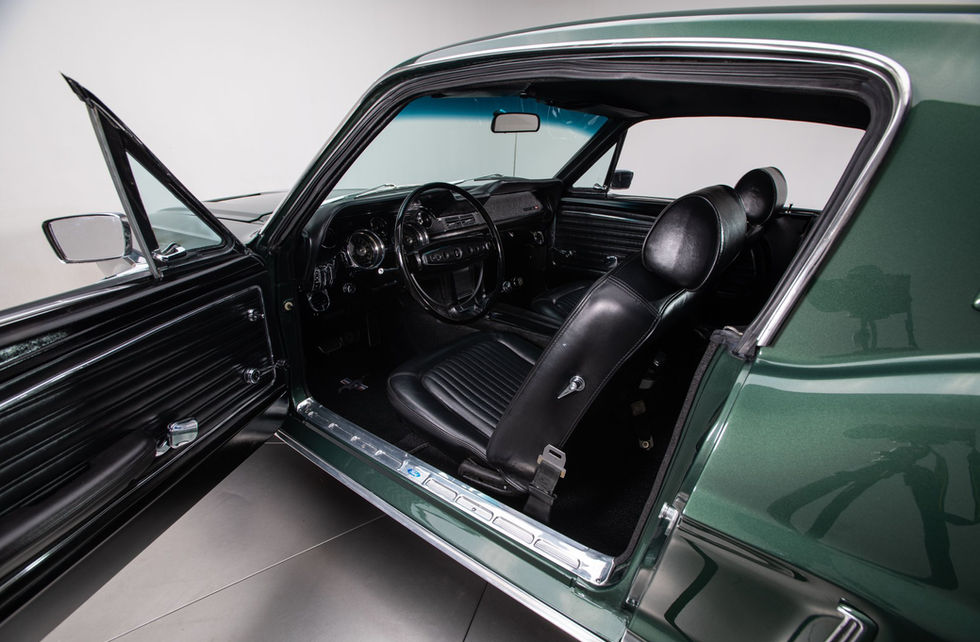1968 Ford Mustang
Images by RK Motors Charlotte - The best place for sales, service and consignment
1968 brought visible changes to the Mustang: a revised radiator grille design, new "Mustang" lettering on the fenders, chrome details for the air intakes and optionally available sport rims in the GT package.
In April, the Mustang reached the category of a real muscle car thanks to the 428 Cobra Jet. With an impressive 335 hp and all GT extras, the 68 1/2 Cobra Jet Mustang set new standards.
The 335 hp Cobra Jet, based on the 428 block, combined elements of the 427 with special equipment: cylinder heads from the 427, a special cast iron intake manifold, a four-barrel carburetor with 735 cfm, a 390 GT camshaft, connecting rods from the "PL" piston, and a compression ratio of 10.6:1. The performance package also included servo disc brakes, special dampers and a 9-inch differential.
Over the summer, Tasca modified the big block Mustang with Ford components and created an impressive powerhouse. Instead of the 390 FE V-8, he went with a 428 Police Interceptor, equipped with special cylinder heads, large valves and a 735 cfm Holley four-barrel carburetor. The result? An impressive quarter mile time of 13.39 seconds.
The Ford Motor Company reacted quickly and presented the 428 Cobra Jet Mustang on April 1, 1968. Although it officially only had 335 hp, it successfully positioned Ford in the high-performance scene.
Tasca emphasized: "The Cobra Jet marked Ford's superiority in the field of performance vehicles. It was the fastest production vehicle in the world at that time, not only in terms of top speed, but also in acceleration and driving pleasure." Hot Rod's Eric Dahlquist summed it up well: "The CJ will delight Ford enthusiasts and challenge others as it is the fastest production sedan in the world."
The '68 Mustang also has a permanent place in film history, particularly through the legendary film car "Bullitt." In the 1968 film "Bullitt," a "Higland-Green" Ford Mustang Fastback GT390 was used in one of the most famous car chases in film history, and this iconic scene helped immortalize the Mustang in pop culture.
brochure
























